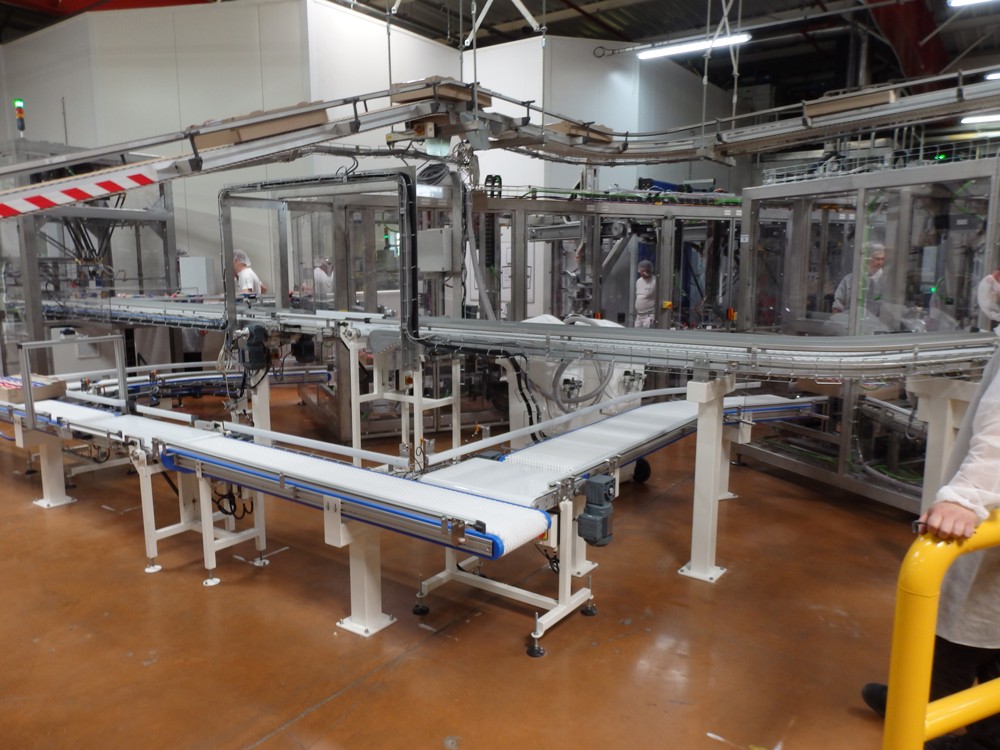Plastic Container Manufacturer Quality: Crafting Solutions for You
Plastic Container Manufacturer Quality: Crafting Solutions for You
Blog Article
Effective Industrial Recycling Solutions for Lasting Packaging: A Comprehensive Overview
In today's progressively environmentally-conscious world, the demand for lasting product packaging remedies has actually never been higher. To meet this demand, services throughout sectors are proactively looking for reliable commercial recycling remedies. Browsing the complicated landscape of lasting packaging can be challenging without an extensive guide. That's where this extensive guide on effective industrial recycling solutions for sustainable product packaging can be found in. By discovering crucial locations such as packaging material selection, designing for recyclability, applying reusing facilities, working together with recycling partners, and tracking and measuring reusing success, this overview will equip you with the knowledge and tools essential to make enlightened choices and drive favorable modification within your company. Whether you're a packaging professional, sustainability supervisor, or merely thinking about the subject, this overview will offer valuable understandings and approaches to assist you navigate the globe of sustainable product packaging.
Packaging Product Selection
The selection of packaging products plays an important role in making sure the sustainability of industrial recycling solutions. When it pertains to sustainable product packaging, the selection of products is key in decreasing environmental effect and optimizing reusing efficiency. Choosing the best materials can help decrease waste generation, conserve sources, and advertise a circular economic climate.
Products like cardboard, paper, glass, and certain kinds of plastics can be reused multiple times without shedding their high quality. On the other hand, materials that are difficult to reuse, such as non-recyclable composites or combined plastics, can create obstacles for the recycling procedure and may end up in land fills or incinerators.
Another factor to consider is using eco-friendly and naturally degradable products. Product packaging made from renewable energies, such as plant-based plastics or biopolymers, can help minimize dependence on nonrenewable fuel sources and alleviate environment change. Furthermore, eco-friendly products break down naturally with time, decreasing the buildup of waste in land fills.
Additionally, the weight and quantity of product packaging products should be reduced to lower transport expenses and power intake. Light-weight products not just call for fewer resources during production however additionally add to decrease carbon emissions during transportation.
Designing for Recyclability
In order to make sure the recyclability of product packaging products, thoughtful layout is essential. Designing for recyclability involves creating packaging that can be easily sorted, separated, and processed in reusing centers. One vital facet of making for recyclability is the selection of products. Product packaging developers need to focus on the usage of materials that are commonly approved for recycling and have established reusing frameworks. Products such as glass, light weight aluminum, and specific kinds of plastic, like animal and HDPE, are frequently reused and must be liked over materials that are costly or hard to reuse.
One more important consideration in creating for recyclability is the removal of unneeded components or products. By reducing the variety of layers, finishes, and additional parts, packaging can be made less complex and much easier to recycle. Furthermore, designers must aim to minimize using combined materials, as they can make complex the recycling process.

Implementing Recycling Facilities
Effective application of reusing infrastructure is critical for the success of industrial reusing remedies. Without appropriate framework in place, the recycling procedure becomes inefficient and inadequate, preventing the overall goal of lasting product packaging.
To execute reusing framework efficiently, a number of vital factors need to be taken into consideration. There need to be a well-organized collection system that helps with the separation and collection of recyclable products. This can consist of marked reusing containers in public spaces, as well as partnerships with waste administration business for curbside pick-up and sorting.
As soon as accumulated, the recyclable materials need to be transferred to recycling centers in a prompt fashion. This calls for reliable logistics and transport networks, ensuring that the materials reach the appropriate facilities without delay.
At the recycling facilities, advanced sorting and processing innovations need to remain in area to divide various kinds of products successfully. This consists of using automated arranging equipments, optical scanners, and hand-operated sorting techniques.
Additionally, there ought to be a durable market demand for recycled materials. view This can be accomplished with cooperations with makers and markets that utilize recycled materials in their production procedures. Developing a secure market for recycled materials incentivizes the recycling industry here are the findings and advertises the round economic climate.
Working Together With Recycling Partners

One key aspect of teaming up with reusing partners is the facility of clear communication channels. It is necessary to develop open lines of communication to facilitate the exchange of info, updates, and comments. This permits both events to stay informed concerning the development of reusing campaigns and attend to any obstacles or problems that might develop.
Additionally, cooperation can involve collaborations in executing and designing recycling programs. Recycling partners can supply important understandings and support in developing efficient collection systems and establishing the most proper recycling modern technologies. By interacting, services and recycling partners can optimize the reusing process and decrease waste.
Additionally, partnership can expand beyond the operational elements of reusing. It can likewise incorporate campaigning for and education initiatives. By signing up with pressures, services and recycling companions can increase recognition regarding the value of recycling and promote the fostering of sustainable packaging methods among consumers and other stakeholders.
Monitoring and Measuring Recycling Success
To guarantee the performance of industrial reusing solutions and the achievement of sustainable packaging goals, it is vital for organizations and their reusing partners to develop a comprehensive system for monitoring and measuring reusing success (plastic container manufacturer). Gauging and tracking recycling success enables organizations to evaluate the influence of their recycling efforts, identify locations for improvement, and set significant targets for future progress
One means to track recycling success is through using data Our site collection and evaluation devices. By collecting information on the amount of packaging waste produced, the percent of waste that is recycled, and the kinds of products being reused, businesses can obtain important insights right into their reusing performance. This data can after that be assessed to identify fads, patterns, and locations of inefficiency.
One more important facet of monitoring and measuring recycling success is establishing clear and standard metrics. This permits organizations to compare their efficiency against sector benchmarks and track their progress with time. Metrics such as recycling rates, waste diversion prices, and greenhouse gas exhausts can supply a measurable action of a business's reusing success.

Verdict
To conclude, executing efficient commercial recycling services for sustainable product packaging calls for cautious consideration of packaging product option, developing for recyclability, carrying out reusing framework, working together with reusing partners, and monitoring and gauging recycling success. By integrating these techniques, companies can add to an extra lasting and environmentally-friendly strategy to product packaging, decreasing waste and promoting the round economic climate.
By checking out key locations such as product packaging material selection, developing for recyclability, implementing recycling infrastructure, collaborating with reusing companions, and tracking and determining reusing success, this guide will furnish you with the knowledge and tools essential to make educated choices and drive positive adjustment within your organization. Packaging designers need to prioritize the usage of materials that are extensively accepted for recycling and have established recycling facilities.Cooperation with recycling partners is important for the successful execution of commercial recycling services and the achievement of lasting packaging goals. By signing up with pressures, businesses and recycling partners can increase understanding concerning the significance of recycling and advertise the fostering of lasting product packaging techniques amongst consumers and other stakeholders.
By collecting data on the amount of packaging waste generated, the percentage of waste that is reused, and the kinds of products being reused, organizations can gain valuable insights into their reusing efficiency.
Report this page